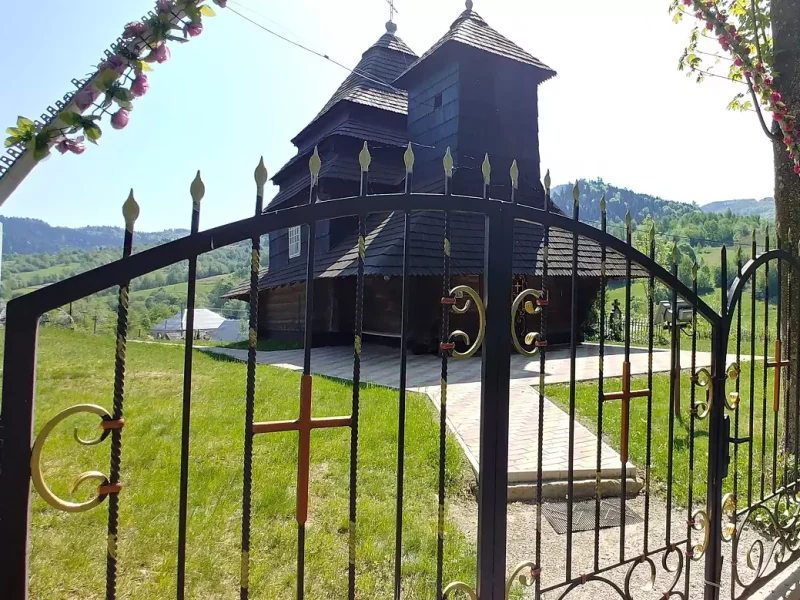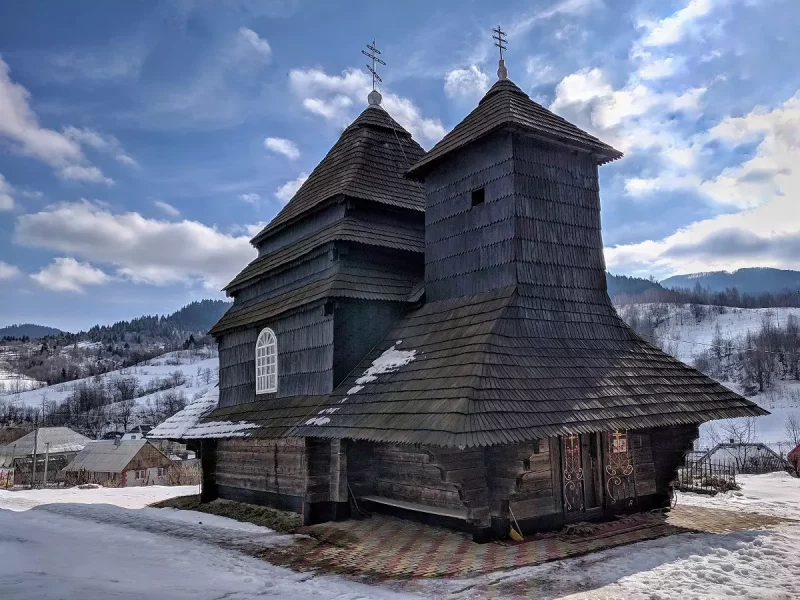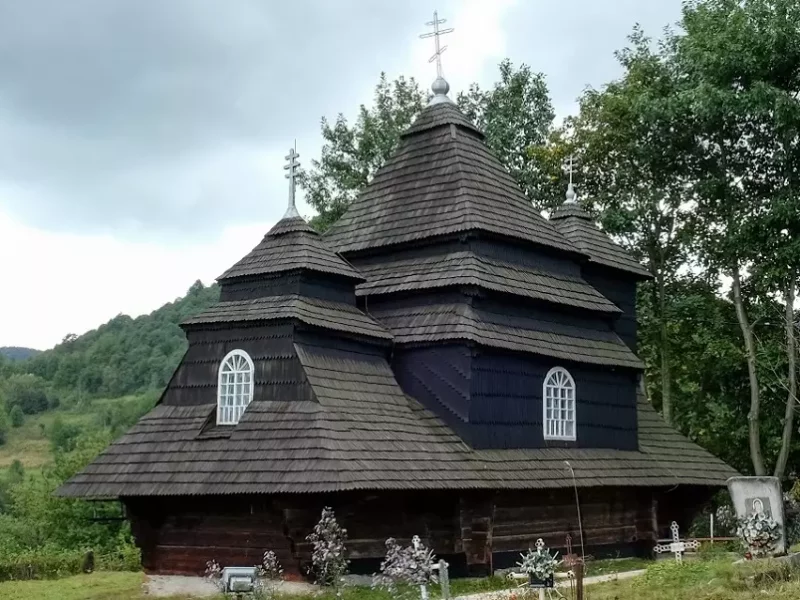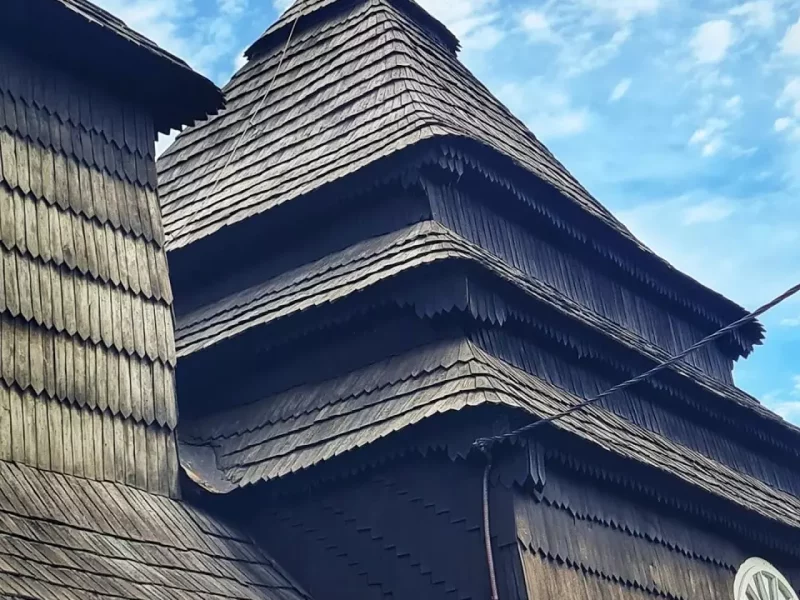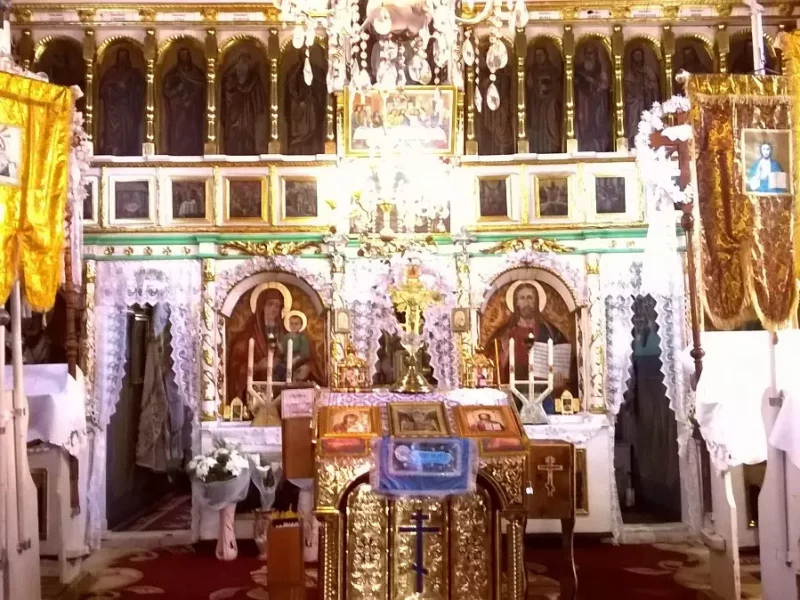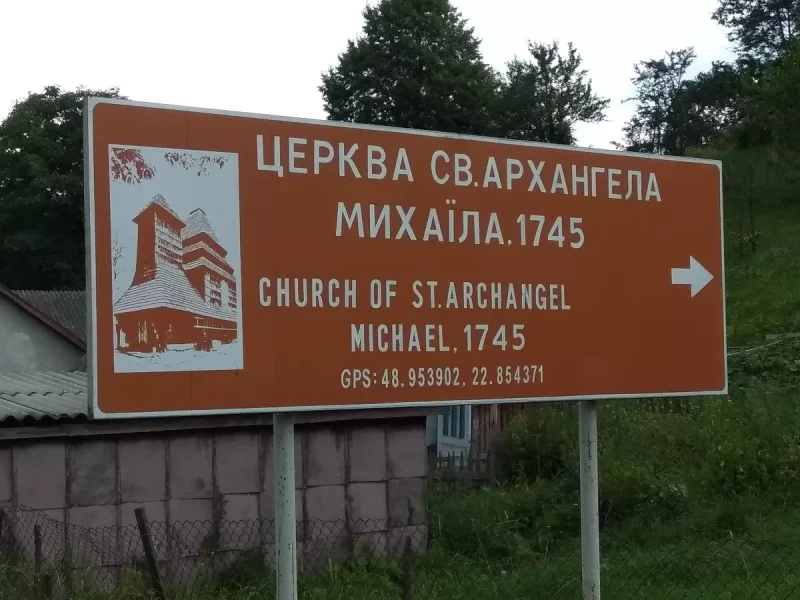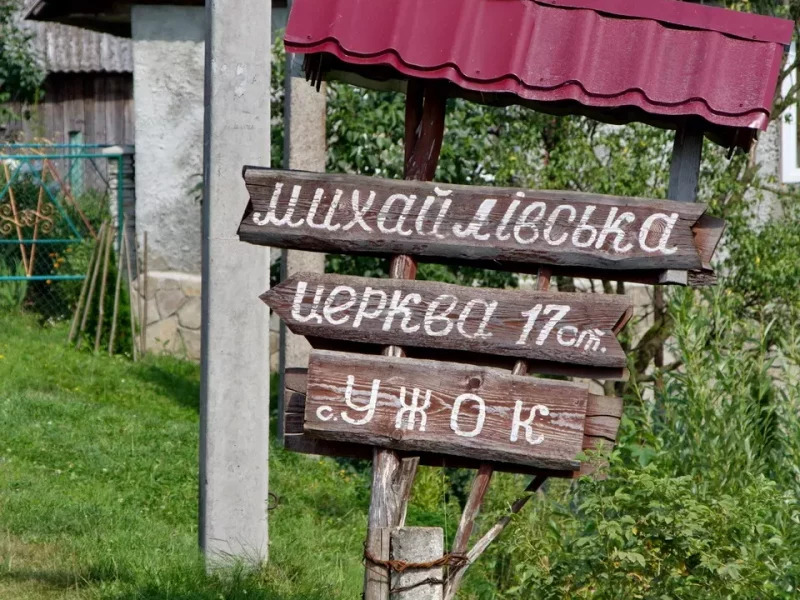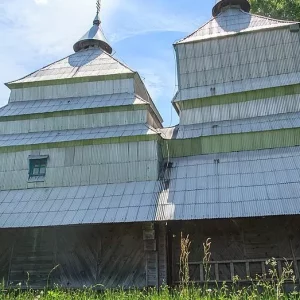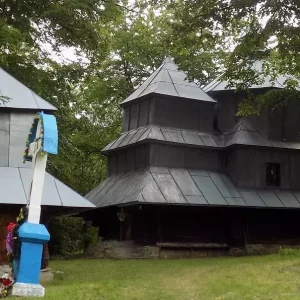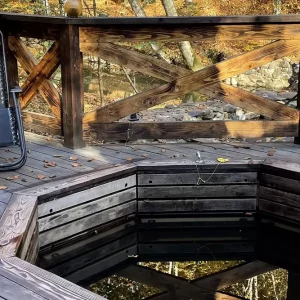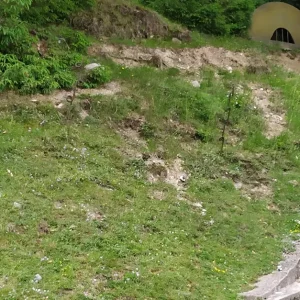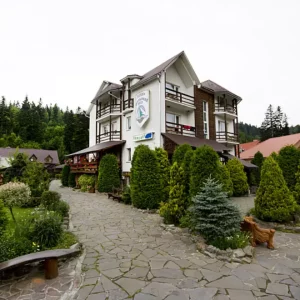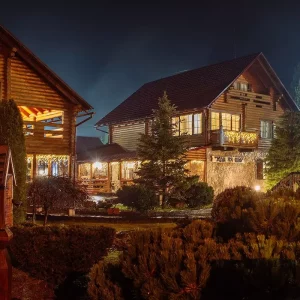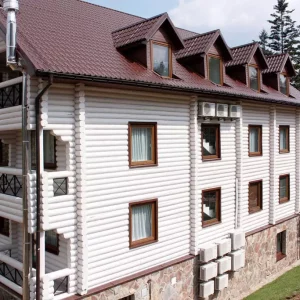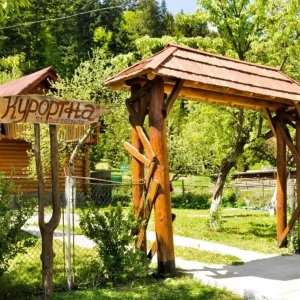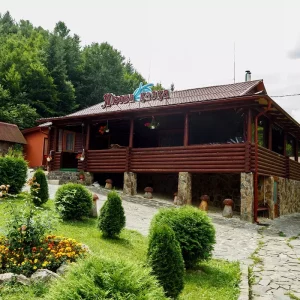Detailed description of the Church of St Michael (Uzhok)
The church was built and consecrated on 11 June 1745. This is evidenced by an ancient carved inscription on the doorway. The church was built in the Boyko style by craftsmen Pavlo Toniv from the neighbouring village of Bitlia on the Lviv side of the Carpathians and Ivan Tsyhanyn from the village of Tykhy (on the outskirts of Uzhok). The main building material for the church was large spruce beams.
In 1927, in the northwestern part of the churchyard next to the church, a small, rather typical Transcarpathia a two-tiered bell tower that replaced the old one.
The temple looks simple and unpretentious in shape, it does not have any expressive and bright decorative details. Nevertheless, it is slender and elegant. It is no coincidence that his silhouette is present in the paintings of almost all the painters of the Transcarpathian school of painting. Photographers like to take pictures of him. It is dominated by the horizontal division of the tops and towers. The wide dormer that covers the entire building gives it a compact appearance and is a key element in the organic transition from the environment to the main part of the temple, which rises above the gallery.
The temple’s bell is a hundred years older than the building. The roof of the temple is covered with shingles – specially carved wooden planks, 30 centimetres long and 10 centimetres wide. To protect it from water and decay, the roof is covered with a special substance every two years. In addition, this church was built without a single nail.
Inside the church, there are icons and old prints from the 17th century, as well as an authentic altar from the 18th century.
In the interior of the church, the craftsmen used the contrast of light and shadow. Walking from the dark “Babinets” to the bright central part of the church, a person perceives this space as much larger than it actually is. This effect was certainly taken into account by talented folk architects. The impression is enhanced by a surprisingly beautiful carved iconostasis with shining gilding.
The cultural and historical value of St Michael’s Church is recognised internationally. On 21 June 2013, it was inscribed on the UNESCO World Heritage List.

